How to choose seeds
It largely depends on the seed material future harvest. Let's consider what to pay attention to when buying seeds.
Classification by size
From the economic point of view, seeds are classified by size (or size). It is customary to count ego by the number of them in 1 g:
- very large - from 1 to 10 seeds in 1 gram;
- large - 10-100;
- medium - 100-350;
- мелкие — 350-900;
- very small — more than 1000 seeds in 1 g.
Size is considered an adaptation in the course of evolution. The larger the seeds, the faster sprouts appear. Large-seeded crops needed rapid growth, starting from seedlings, to defeat competitors in the struggle for light in the environment of tall grass (corn, beans) or in tropical thickets (cucumber). But small seeds (celery, tarragon) helped the seedlings to compete with the seedlings of other plants due to their modest water and nutrient requirements. At the same time, the size of the seeds does not affect the size of the adult plant. For example, an average-sized tomato seed can grow into a huge plant of several meters.
Protection against counterfeits
Buy seeds, especially with the approach of spring, you can do it in different places - from traders in stalls and bazaars to specialized and online stores. According to experts' estimates, about 20% of the seeds of the most profitable crops are counterfeited in Ukraine. For fraudsters, it is very attractive to replace very expensive hybrid seeds of foreign companies with seeds of unknown origin.
Unfortunately, today's printing market makes it easy to fake not only packets, but also holograms. Of course, it is impossible to fake an original hologram, but sticking a designer one instead is quite possible. Not knowing how to distinguish them, it is easy to buy a fake.
Each manufacturer colors the coated seeds, which is an element of the technology to protect against counterfeiting. Even here, fraudsters have figured out how to fake them using dyes. And yet, fake seeds are usually treated with unstable paint, which falls off during the transportation of the seeds. If there is a lot of dust in the package from such crumbling paint, this should be alarming, since the inlay machine provides a dense coating, and companies work with leading specialists in chemistry, which excludes crumbling of the coloring matter.
Seed manufacturers put holograms on packages or metal bottles, special labels on which all possible information about the product, photos of varieties, and a QR code are placed. The absence of such information should also be alarming.
Before buying, it is not enough to find out what the original package looks like, for example, visit the company's website, and if necessary, call the sales manager. Is retail packaging done? For example, the seeds of one well-known company are not sold in quantities less than 1,000 seeds. And in this case, a bag with 500 seeds is easily suspect.
Finally, the presence of impurities, damaged seeds, weed seed impurities, sand particles, etc. in the bag is evidence that they contain seeds not from Dutch companies, but cheap material of Ukrainian production.
Leading manufacturers produce seeds in 2 forms - professional (wholesale) packaging and retail. As a rule, there is no need to buy expensive packages with a huge amount of seeds, which are enough for several hectares, for summer cottages. Usually, a favorite variety is determined in advance by looking at an advertisement with a beautiful picture in a magazine, or by browsing the electronic catalog of a foreign company, or by hearing reviews from friends about it. First, you need to check whether the seeds of this variety are available at retail. Often, the most popular of them are bought up by resellers, who then sell them at a discount in their retail outlets and even in bazaars. This practice is especially common in villages remote from district centers. In this case, you should not demand confirmation from the dealer - even on the natural market, high-quality original seeds will be sold, but with a twist. In this case, as in others, the packaging will tell a lot.
Let's read the packaging
The outer side (front) is the most attractive. It indicates the name of the variety (hybrid), the appearance of the fruit (photo), the name of the producer and the name of the culture.
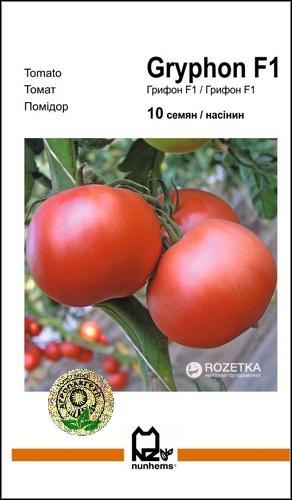
The front side of the package, often it is the picture of the fruit that influences our choice... But not everything is so simple.
The name of the variety can be in another language, if seeds are imported from abroad, but duplicated in Russian or Ukrainian. This is done so that there is no confusion with the name of the variety, because some sounds of foreign languages have no analogues. For example, the inscriptions "Raisa" and "Raisa". Today, there are almost no varieties left in many cultures - only hybrids are found. In this case, the name should be followed by the designation - F1.
The appearance of fruits is no less important. The fact is that in practice, many harvest the fruits of individual crops (for example, tomatoes, peppers, etc.) when they are not fully ripe. If you wait for their complete reddening, this greatly depletes the bush, and increases the risk of theft. Therefore, only the most typical and beautiful brushes are left on 1-2 bushes for photos from the catalog, waiting for full ripening. And if a drawing is made instead of a photo, especially a general type of culture, and not a specific variety - a company that appreciates its clients will not do this. The same goes for the background. It is one thing when the photo is taken on a plant, another when it is taken from the Internet and retouched by a designer.
The name of the manufacturer is no less important. Unfortunately, domestic seed production is in decline today. Today, only 2 institutions produce vegetable seeds in the country: "Institute of Fruit Growing and Melon Growing of the National Academy of Sciences" (near Kharkov) and "Institute of Southern Fruit Growing and Melon Growing of the National Academy of Sciences" (Golay pristan, Kherson Region). Not having the possibility of sufficient financing, they cannot allow the release of illustrated catalogs, foil packaging, seed preparation and other attributes of foreign companies, which naturally does not allow them to compete with them in terms of sales. Yes, they sell the seeds of "NPF Vassma", "OOO Elitsortnasinnia", "Semena Ukrainy", "Svityaz", "NK Elite". But... the last 3 are no more than trademarks that offer and sell seeds not only of domestic, but also of foreign varieties. The first 2 are also engaged in the same thing. So the seeds of foreign selection, for example, the following companies, have become very popular:
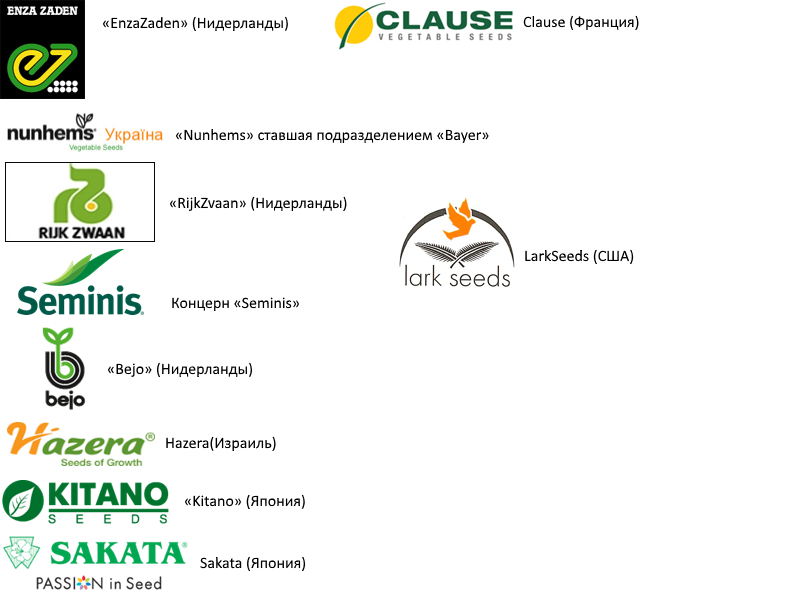
Logotypes of the most popular companies
And this is far from a complete list. It happens that the company's seeds are sold by a well-known distributor, and then its name is also indicated on the front of the packet.
The name of the culture is mandatory due to possible confusion for individual cultures in the names. The example of a tomato with the second name "tomato" (and in some countries - the other way around) shows why in some cases the name is duplicated in Latin. However, in some companies, the name of the culture and variety is duplicated on the reverse side.
The reverse side can give even more valuable information. On it, in addition to the botanical name of the culture and variety, the following are indicated: batch number, variety characteristics, address of the organization selling the seeds and its registration number, bar code, mass (in grams) or quantity (pieces) of seeds in a bag, date of sale of seeds with date, month and year. In addition, information on compliance with the standard for varietal and seed quality is provided.
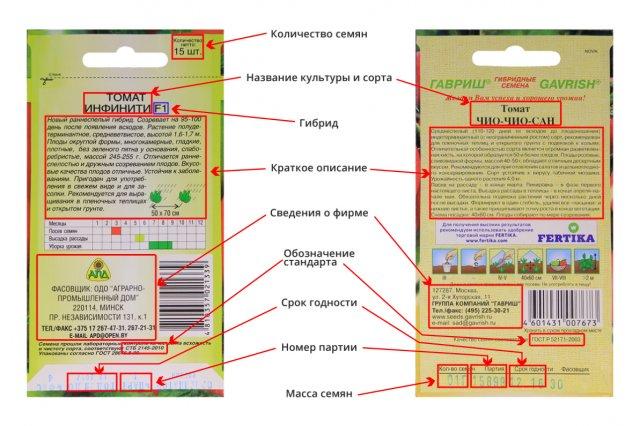
The lot number, indicated on the label or other type of marking must be the same as on the documents accompanying this lot. You can ask for the documents for the batch of seeds and compare them with the number on the label.
Characteristics of the variety must be clear and professional. It is clear, for this, it is necessary to at least minimally understand this issue itself. For example, for a tomato, you should be interested in information about the nature of growth (determinant or indeterminate), the presence of a green ring near the peduncle (or its absence), resistance to diseases (which ones exactly), for what the variety is recommended (for film or glass greenhouses, field conditions or processing) etc. If such information is not provided in full, the name of the author's company is actually given for this purpose. In this case, you can call the manager of the company and ask these questions, while it is recommended to take into account the wishes of the customer.
Name and address of the organization selling seeds, its registration number. It is clear that foreign companies cannot always sell directly, especially in regions far from regional centers. In this case, they entrust it to dealers or distributors. The difference between both intermediaries is known: if in the chain from the manufacturer to the buyer between the manufacturer and the dealer there may be more links (for example, a distributor), then there is no one between the dealer and the buyer. The dealer can distribute products under his own brand, in any territory, independently choose product promotion strategies (for example, product advertising). He improves his reputation at the expense of not his goods, but the distributor's goods, representing the interests of the manufacturer in the market or in his region.
Ask the dealers to show you a license to sell seeds of a particular company and a certificate of conformity for seeds with seals of the State Seed Inspectorate and the manufacturer's company. Upon additional request, you have the right to demand to show the test report of this variety, which is issued by the state commission during its zoning in specific zones of Ukraine.
However, today the varieties of many companies are sold as yet unzoned, without having passed the variety test. Even in this case, you can protect yourself from counterfeiting. After buying seeds, save the packets or packaging so that in case of suspicion of counterfeiting, you can file a claim with the manufacturer (the telephone number of the representative office is indicated on the packet). If you have an original package, the company will compensate the expenses.
Weight (in grams) or number of seeds in a bag. This is convenient for planning the necessary amount of seedlings and the future harvest. In addition, it allows you to determine the value of each seed. For example, 10 cucumber seeds can cost 10 hryvnias, and especially valuable and popular hybrids can cost even more.
Time for seeds to be sold indicating the date, month and year. The date of sale is not the expiration date of the seeds. When it expires, the seed bags are removed from the market or destroyed. But what to do if you have unused bags of seeds lying around?
If you have cucumber, tomato, pumpkin, zucchini, watermelon, melon seeds left, these crops maintain stable germination for 7–10 years or longer. Cabbage, radish, radish, turnip, spinach, beans, beans, peas and asparagus have a shorter shelf life (4-6 years) without significant loss of quality. The rest of the crops must be used within 2-3 years after purchase, otherwise their germination will decrease sharply.
Description of agricultural machinery by month (usually in pictures). These are recommendations for the time of sowing or planting seedlings and the approximate time of harvesting.
Information about compliance with the standard for varietal and sowing qualities. Don't be surprised if you come across references to the Russian GOST - they bring us quite a few packets of well-known Russian breeding and breeding firms "Havrish" and "Ilyinichna", or the Transnistrian Scientific Research Institute (they are offered by the company "Nasko").
If on there is a warning inscription on the package that the seeds have been treated with chemicals, there should be a short instruction on safe handling of the seeds (usually the inscription is "do not use for food and livestock feed").
If the seeds are of high quality, from well-known manufacturers, they should not have any impurities, dust, damaged seeds as in the photo below:
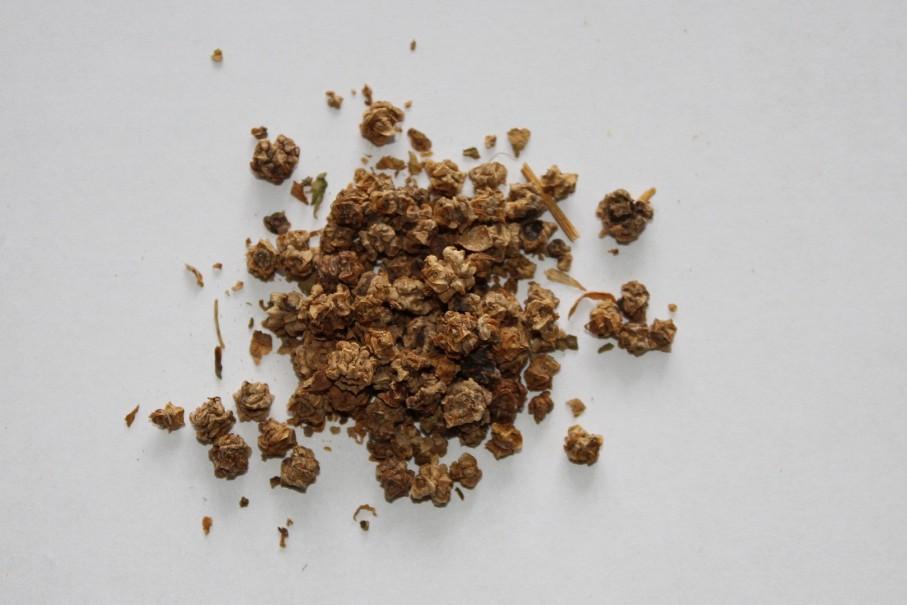
Non-condition: damaged and unsorted beetroot seeds with debris
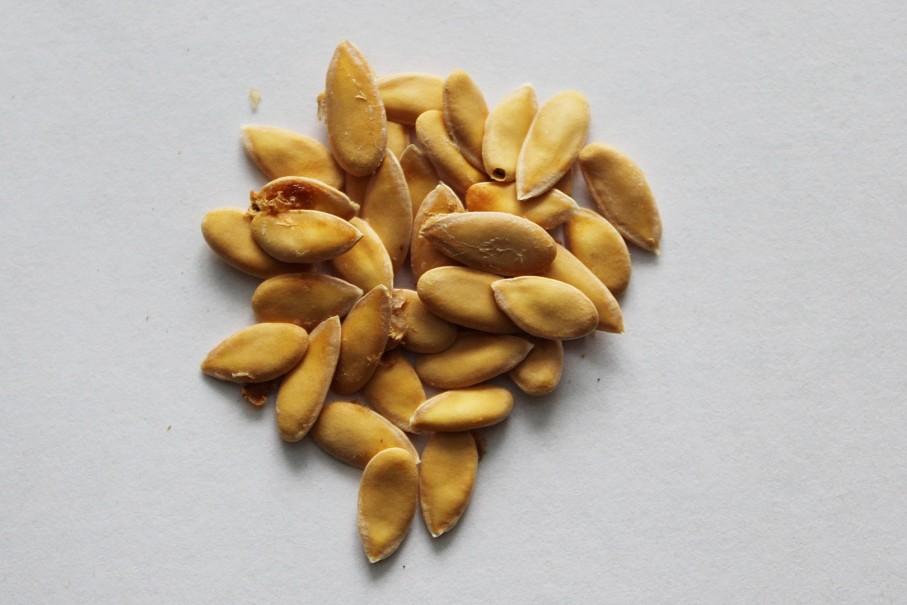
Cucumber seeds or similar melon seeds. Non-condition: damaged and unsorted seeds.
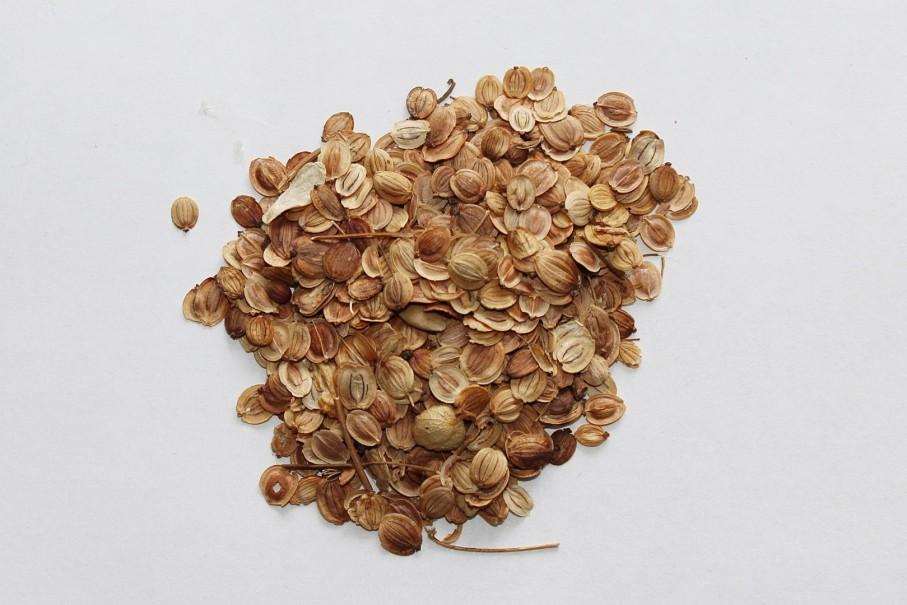
Non-condition of spice seeds: damaged and unsorted seeds with debris.
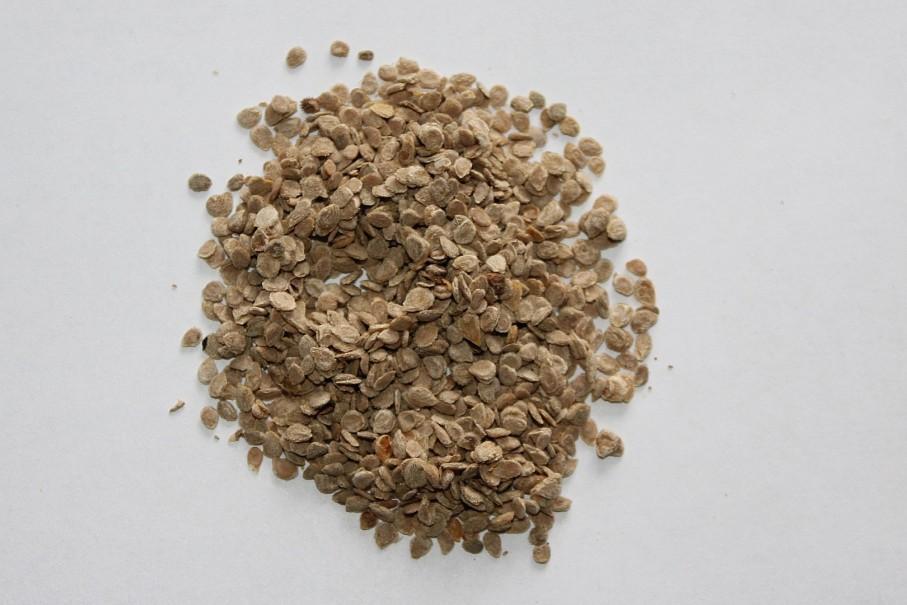
Tomato seeds of famous producers today are coated, processed, encrusted. Unprocessed seeds in bags are a sign of low seed quality and future problems, especially with viral diseases.